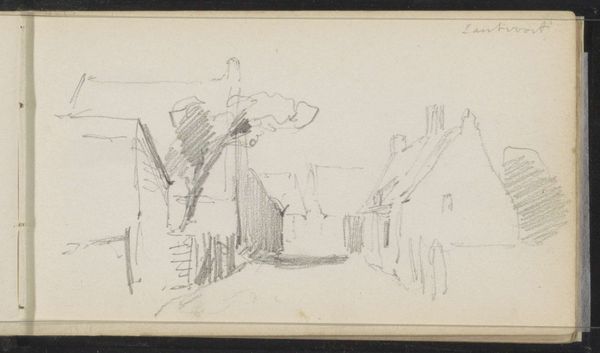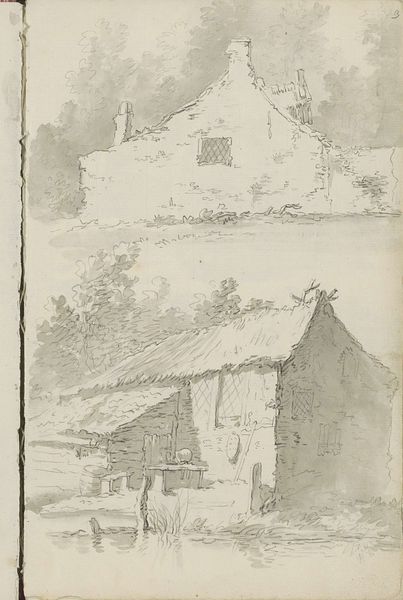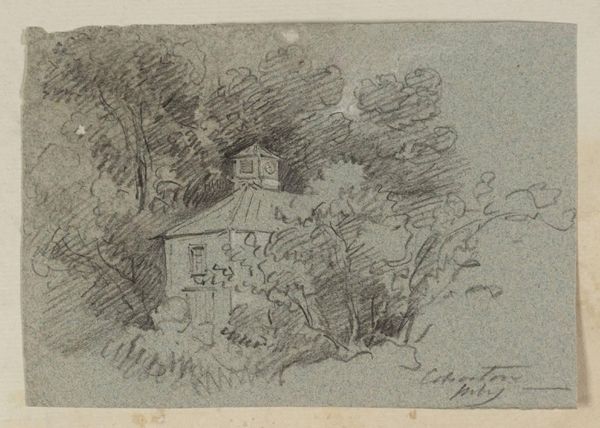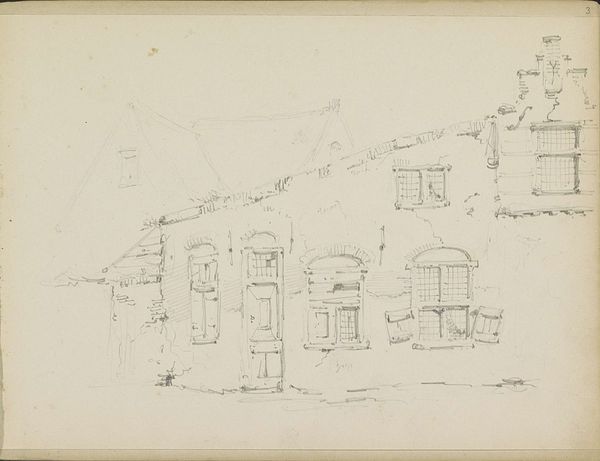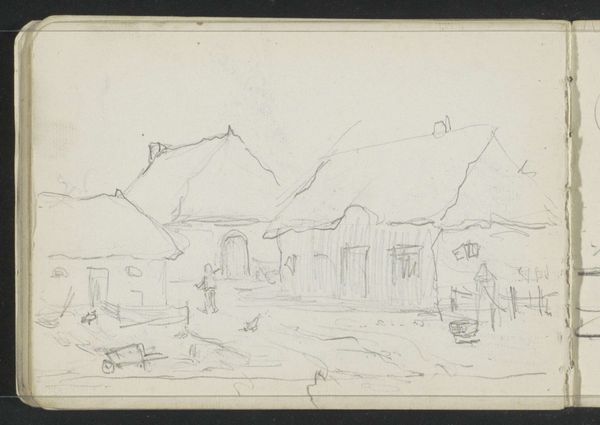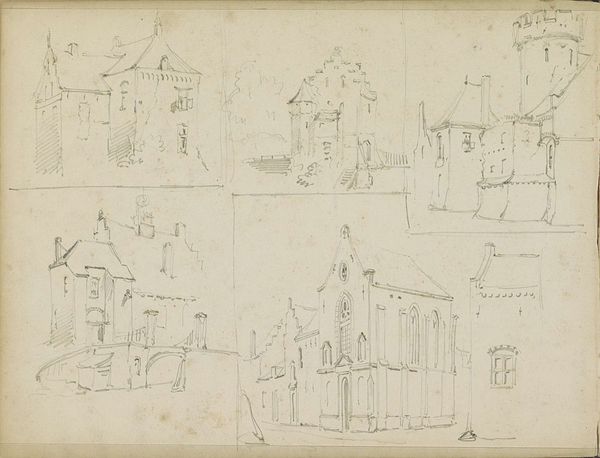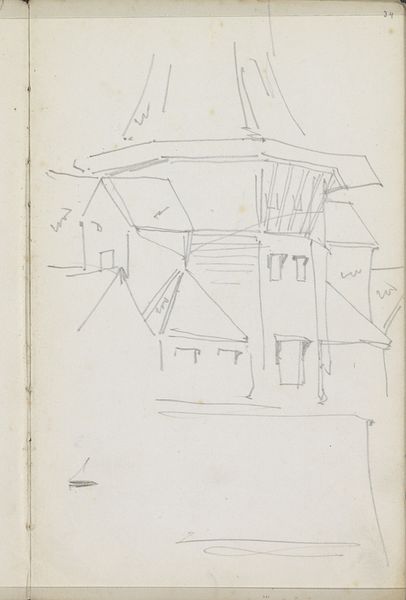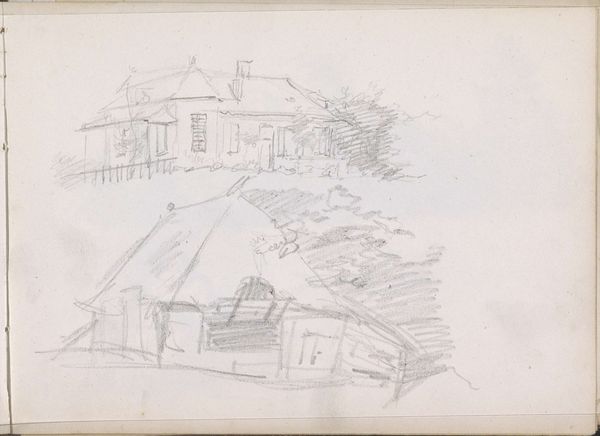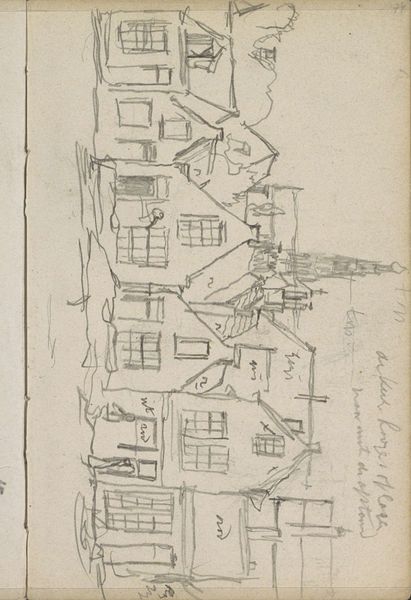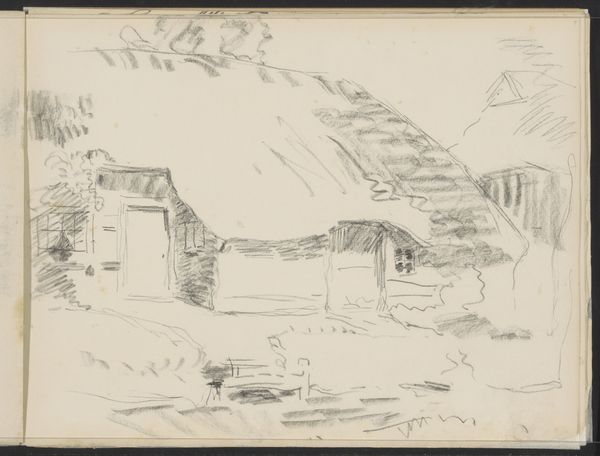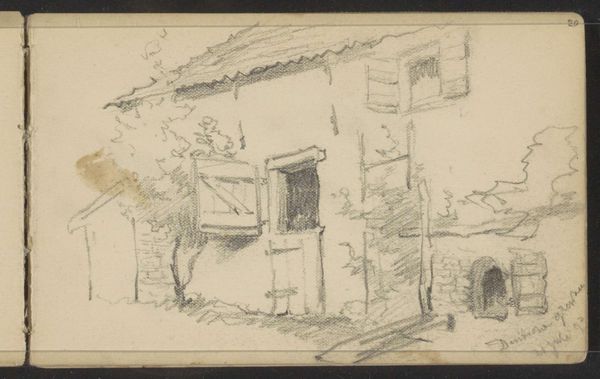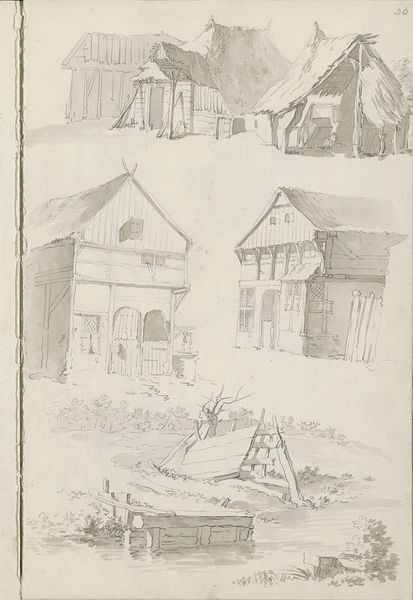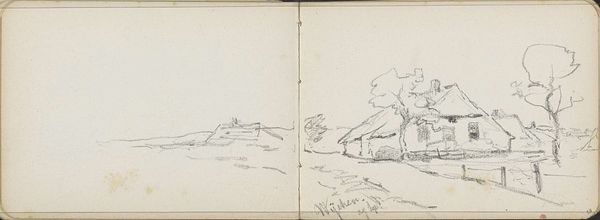
drawing, pencil
#
drawing
#
quirky sketch
#
dutch-golden-age
#
pen sketch
#
landscape
#
personal sketchbook
#
idea generation sketch
#
sketchwork
#
ink drawing experimentation
#
pen-ink sketch
#
pencil
#
sketchbook drawing
#
sketchbook art
#
realism
#
initial sketch
Copyright: Rijks Museum: Open Domain
Curator: Welcome. Here we have Willem Cornelis Rip's drawing, "Huis te Oostvoorne," created sometime between 1866 and 1922. Editor: Immediately, it strikes me as wonderfully unassuming. It's a sketch, right? Raw and immediate. I can almost smell the paper. You get a real sense of process here, the hand moving, hesitating. Curator: Precisely. And Rip wasn't necessarily creating for the public eye. This work likely comes from a personal sketchbook, giving us an intimate glimpse into his artistic practice. He studied the Old Masters quite deeply, and this very much represents the tradition he comes from, a specific social milieu invested in realism. Editor: Tell me more about the "sketchbook" element, it’s clearly more than just preliminary. I’m interested in how these smaller works found their way to the public, as objects of study. Curator: In Rip’s time, sketchbooks were becoming increasingly valued. It showed the artist's direct engagement with their surroundings and captured their initial thoughts before larger commissions and public exposure. The Romantic notion of artistic genius saw worth even in a quickly executed idea. Editor: So there's a commodification of process occurring here. I'm drawn to the economy of the line – a minimal use of the material to suggest form. What sort of pencil did he use, I wonder? How easily could an artist source materials at this point, what kind of industry supported it? Curator: During that period, the rise of industrial production made artist materials, like paper and pencils, more accessible. You also have art supply shops emerging to cater for amateurs as well. Rip was an active participant in exhibiting societies. We can understand works like this one as connected to those artistic and social spaces. Editor: It's remarkable how this unassuming drawing invites these threads of thought: materiality, social practices, public life… It proves how much even preliminary sketches speak to artistic production. Curator: I agree entirely. And appreciating this also reveals our own present-day cultural fascination with process and authentic gestures within the realm of art-making. Thank you for your astute observations.
Comments
No comments
Be the first to comment and join the conversation on the ultimate creative platform.
